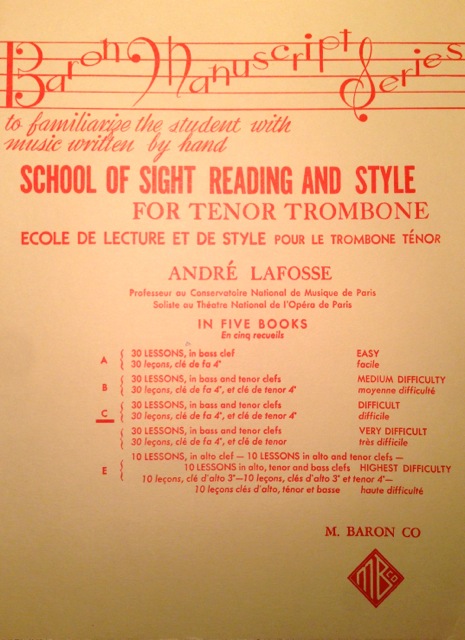[soundcloud url="https://api.soundcloud.com/playlists/53934861" params="auto_play=false&hide_related=false&show_comments=true&show_user=true&show_reposts=false&visual=true" width="100%" height="450" iframe="true" /]
So, most of you young 1A-4A Texas trombonists have ATSSB All-Region auditions coming up in about 2 months! Maybe that statement made you start sweating just a little bit, because IT'S TIME TO START PRACTICING!
Would you like to know the secrets to becoming an ALL-STATE TROMBONE PLAYER? Do you want to know exactly what and how and how much and when and where to practice? Ok, I thought so. Read on and let's get busy!
Let's start by discussing the Blazhevich G Major étude in this post. This is a classic Blazhevich étude and one of my favorites. This is one of those pieces that kind of just "plays itself", musically, as long as you do your job.
First off, I want you to consider your chosen tempo and your time. Those are not the same thing. Your tempo is the chosen metronome marking you are using as your reference for the overall pace of the piece. In this case, I suggest a tempo marking of 72-78. This piece lends itself to a wide variety of tempos, but this range gives it a nice relaxed feel, while still enabling the performer to keep it moving forward.
Ok, now that you have your tempo, let's talk about time! Your time is defined as the consistency by which you apply your tempo. Time in this piece is important in that you need to keep the music moving ahead. If you start at one tempo and slow down (without returning to your original speed), the music will feel like it is just dragging along, and you will feel like the piece may never end. So, it's perfectly appropriate (and beautiful!) to add some ritardandi at the ends of some of the phrases. Just be sure that when you begin the next phrase, you return to your original tempo and keep the music moving. This will give you the "push and pull" that is so desirable, and comfortable, in a piece like this. The critical thing to remember is to ALWAYS SUBDIVIDE! Everyone talks about it, but no one does it! You need to be thinking constant eighth notes in your head throughout the performance of this work. Count yourself off (silently) when you start but think eighth notes in your count off before you begin. You will hear, in my recording, that I am not always back in right on time after my breaths. I feel that's ok in a piece like this as it keeps the music relaxed and unhurried. Just remember, when you come back in, do so at your original tempo. Subdivide!
Volume... I like to play a piece like this with what I call a "soloistic piano", or better yet, "safe soft". This gives me enough volume to add or subtract intensity in a given passage, especially when I'm nervous. Be comfortable, but on the quiet side. Grow the intensity in the fuller dynamics, and let it relax in the quieter sections. Keep it simple. Imagine you are playing in a huge concert hall, gymnasium, or even outdoors and that you are trying to fill up every inch of space with your beautiful sound!
One of the most important things you can do in your preparation for your audition is to record yourself in practice. Use the voice memo recorder on your phone or your parents phone, and every other day or so, play straight through the piece as if you are in your audition. When you play it back, listen for the following:
1. How was my time? Did it stay steady and consistent or did I get faster/slower as the piece went on? WAS I SUBDIVIDING?
2. How was my sound? Was it full and beautiful? Did I imagine the sound I want to hear in my head before I played?
3. How was my legato? Am I moving my slide "late and quick" so as to get a smooth connection between notes with no (or almost no) gliss in the connection?
Good luck. Remember, practice is temporary, pride is forever! That is no joke. Work hard, practice smart, record yourself, and have a great audition!
A posting of the Gatti étude will follow in a few days. Have fun, play your trombone, and make music!
Your Virtual Trombonist,
Chris
 There are five volumes, A through E, with E getting ridiculously hard!
There are five volumes, A through E, with E getting ridiculously hard!